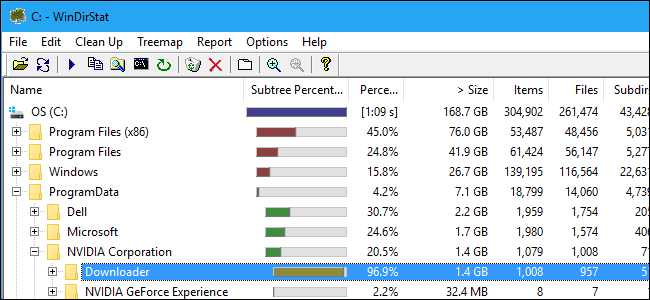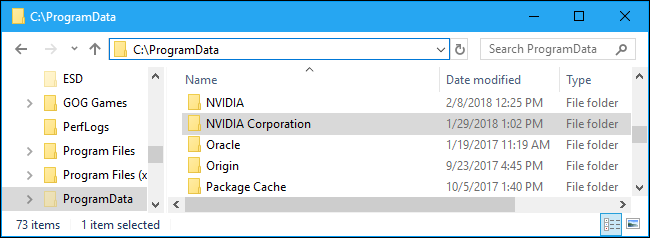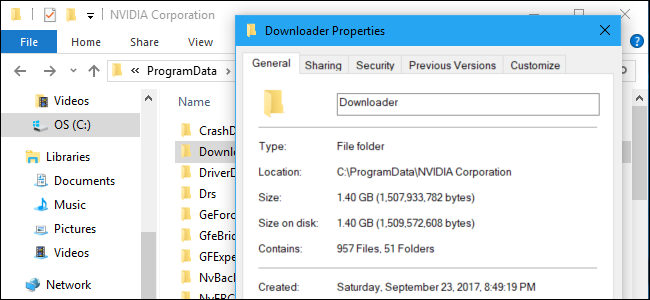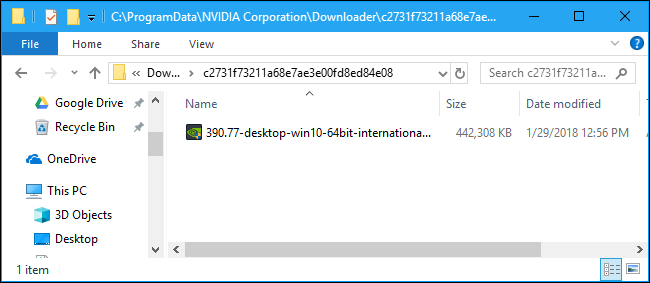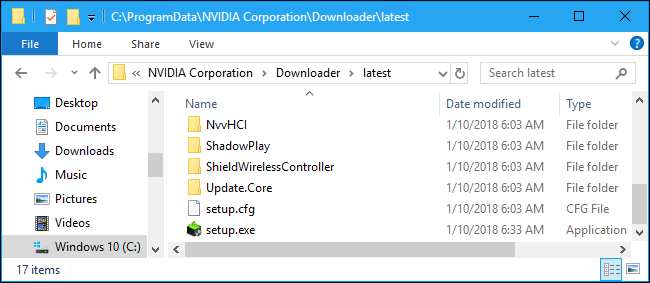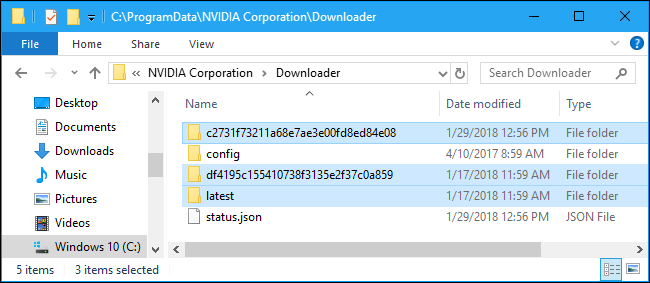Quick Links
If you're a gamer (or just a PC user) with NVIDIA graphics, NVIDIA's drivers are probably wasting gigabytes of storage on your hard drive. NVIDIA leaves old installer files buried on your hard drive until you get annoyed and manually delete them...if you even realize you need to.
As someone who's used NVIDIA graphics hardware for years, this has been annoying me for a very long time. I've seen these files use over 4 GB of space, and, while that may sound like a small amount of space to some, it's a lot of wasted space on a smaller SSD. And you'll probably only notice it if you use a disk space analysis tool.
Update: NVIDIA reached out to us with some new information. In GeForce Experience 3.9.0, NVIDIA added a cleanup tool that will automatically remove old driver versions. NVIDIA now only keeps installers for the current and previous version of the driver, which will be about 1 GB in total.
NVIDIA also said they plan to add a "Revert to prior driver" feature in a future version of GeForce Experience. That's why NVIDIA stores these files on your hard drive.
Where These Files Are Stored
At the moment, NVIDIA stores these graphics driver installation files at C:\ProgramData\NVIDIA Corporation\Downloader. The ProgramData directory is hidden by default, so you have to either view hidden files or type
C:\ProgramData
into your file manager's location bar to go there.
To see exactly how much space these files are using on your PC, open the NVIDIA Corporation directory here, right-click the "Downloader" folder, and select "Properties".
In the screenshot below, these files are only using 1.4 GB of space on our test system. However, that's just because we cleared these files out a few months ago. We've seen this folder balloon much larger in the past.
Previous versions of the NVIDIA software stored these driver installation files at C:\Program Files\NVIDIA Corporation\Installer2, C:\ProgramData\NVIDIA Corporation\NetService, and just under the C:\NVIDIA folder. If you haven't reinstalled Windows or deleted these files in a while, they may still be stored in these folders. We're not sure if NVIDIA's software ever deletes them.
What Are They?
If you open the Downloader folder, you'll see a number of folders with random-looking names. Double-click one of these folders, and you'll see exactly what's inside: NVIDIA driver updates in .exe form.
Basically, whenever NVIDIA's GeForce Experience software downloads a driver update, it stores a full copy of that update's installer here. Even after the driver is successfully installed, the installers are left here.
The "latest" folder stores an uncompressed copy of the latest driver update. This should only be needed during the driver installation process, and you'll only need it again if you ever need to reinstall the latest driver.
Why Does NVIDIA Keep Them Around?
We reached out to NVIDIA to ask why GeForce Experience stores copies of all these installers in a folder like this, but NVIDIA didn't respond.
We can imagine what these are for, however. If a driver update causes a problem, you can head to this folder to reinstall the previous driver update. They're all here and ready to go, so you can easily revert to a previous driver without a long download if you have a problem.
That's all well and good, but how often do users really need to revert graphics drivers? And wouldn't it be better just to keep one or two of the most recent "good" drivers, rather than store 4 GB of drivers going back many versions? After all, even if a user needed to revert to an old driver, they could always download the old version from NVIDIA's website. There's no need to waste 4 GB of hard disk space "just in case".
This makes even less sense when you consider that NVIDIA's GeForce Experience software does not make it easy to revert to another driver version. It doesn't even tell users that these installers exist. Hardly anyone will ever find and run these, so why keep them around? If these files have to stick around, GeForce Experience should offer a way to manage them so users don't need to dig into the ProgramData folder to free up space.
How to Delete Them
While the default Windows file permissions won't let you delete the entire Downloader folder, we've found that you can simply open the Downloader folder and delete the "latest" folder and the other folders with random names. Leave the "config" folder and "status.json" file alone.
This will free up the space used by NVIDIA installer files on your system. However, when GeForce Experience downloads new driver files and installs them, those new driver files will be stored here until you delete them, too.
CCleaner can also automatically erase these NVIDIA installer files. Messy installers that greedily consume disk space like this without giving users control are a big reason why so many Windows users end up running tools like CCleaner. If software developers behaved better, so many users wouldn't have been in danger from the CCleaner hack.

